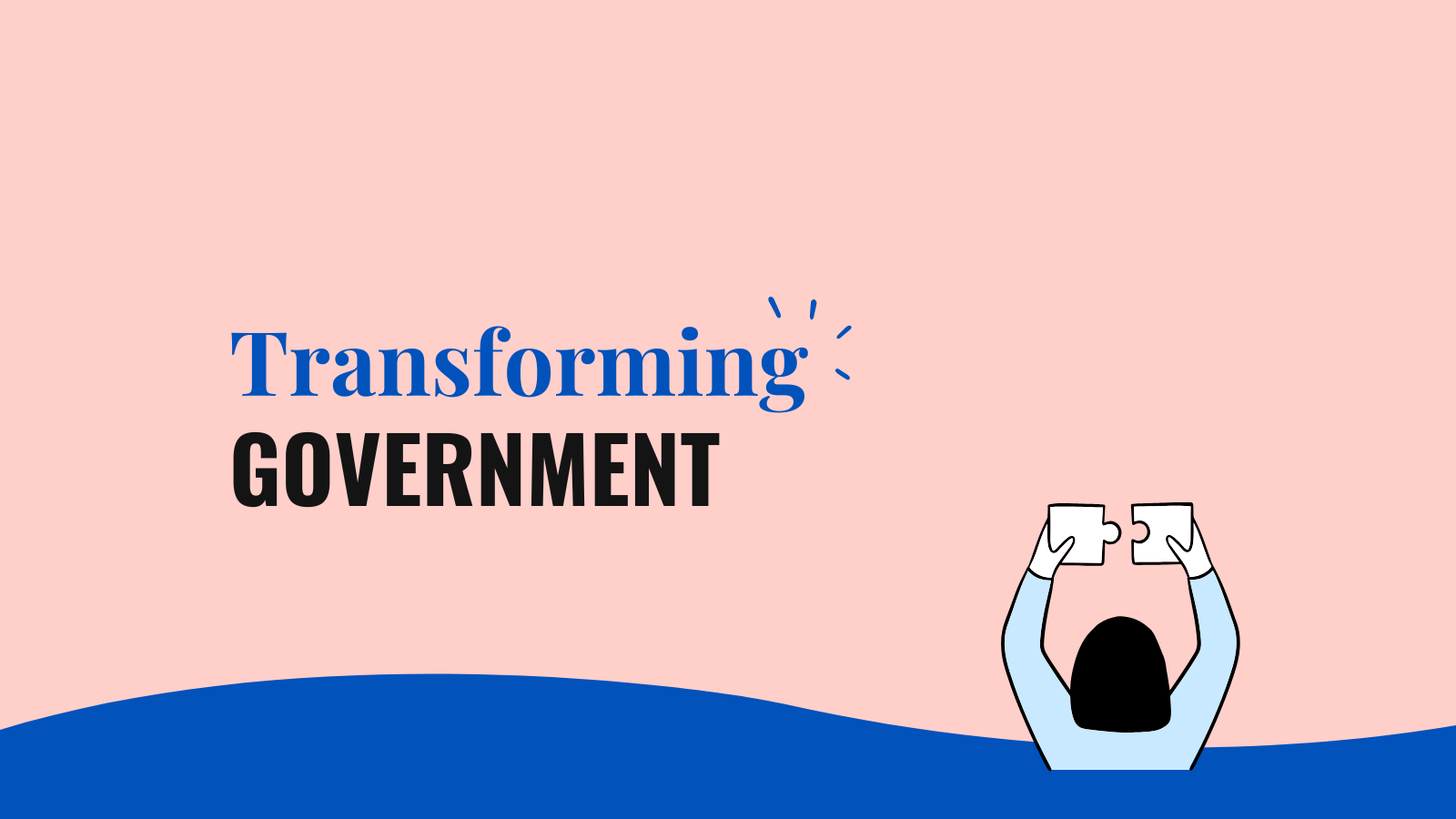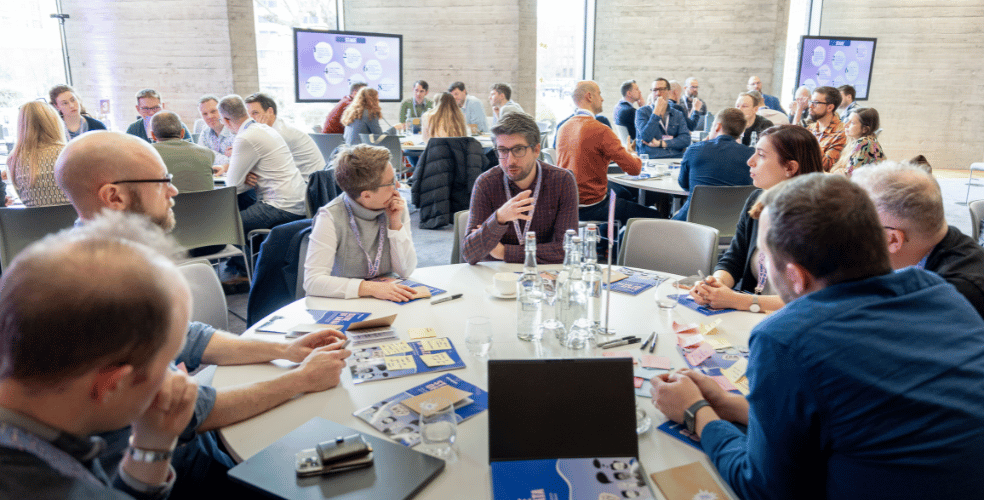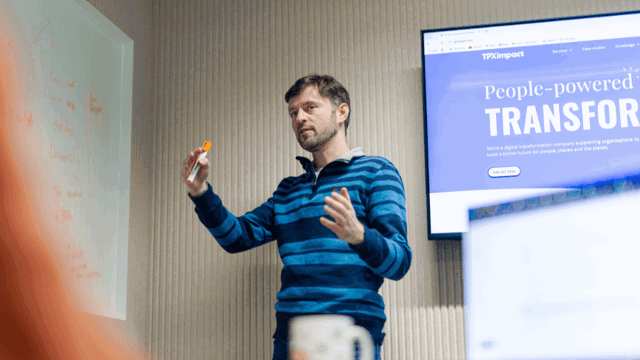As digital technologies become more widely seen as crucial to modern business, organisations face an issue of talent. Not only in recruiting for experienced technical roles — where the talent gap has been widely reported — but also in finding the right people for senior leadership positions. In this series, we speak to digital and technology leaders from a range of organisations, to find out how they're meeting their biggest challenges.
As Chief Digital and Technology Officer of the Department for Education (DfE), Emma Stace is tasked with bringing the tools, practices and culture of digital technologies to the fore. CDTO is an emerging role we are beginning to see across the industry — a merging of the traditional Chief Digital and Chief Technology Officer roles. But with all these different job titles, things can quickly start to become very confusing...
So how does Emma view such digital and technology focused roles?
“Defining CDO and CTO roles is a minefield of a question, which there's no right answer to,” she says.
“My distinct view comes down to what is digital — it's a mindset. Valuing the user experience, iterating, using data to change and test and improve that experience, and melding all of this with business efficiency. You could describe it as software development meets design meets user research. Whereas technology has historically been a much more independent function in organisations. It's about systems and engineering, as opposed to the outward facing experience.”
“Digital is often perceived — wrongly — as risk taking. Whereas technology can be perceived as a way of avoiding risk. This can create different cultures and the perception that digital and technology are very distinct. My role as CDTO is really to bring cultures and skills together and explore and open up spaces for working together and learning from one another.”
Why — and what — now?
Why did the DfE decide to go down the route of a combined digital and technology leadership in summer 2020? Emma cites an expanding digital team, whose relationship with technology began to become unclear.
“It's also increasingly good practice,” she says, “something we are seeing as a trend. The Ministry of Justice, Home Office and HMRC, to name a few, have all blended their digital and technology teams together.”
As with many other business themes this year, the pandemic also had its part to play in moving the conversation forward.
“The sheer necessity of having a strong digital and technical function within our department was really shown up by covid. Maybe we would have gotten around to the merging of DfE digital and technology in due course but covid made it a necessity to bring them together more quickly,” Emma says.
You can't do everything at once
The coronavirus has also shaped DfE's aims for the year ahead, which are reflected in its digital and technology strategy. With so much work to do, prioritisation is a key – if not elusive – challenge.
“Prioritisation is what I struggle with most as a CDTO — it's learning to accept we just can't do it all at the same time,” Emma says. “But we've outlined four key themes that are helping us deliver effectively together.”
“Our number one priority is running the business, while the vast majority of our people work from home, making sure our systems and infrastructure are running effectively and delivering resilience to the organisation. The second is responding to the needs of the sector - children and learners — which have changed dramatically because of covid. The third is reducing the burden — becoming more efficient at engaging with the sector and also becoming more effective internally as a team.”
“Finally, we want to raise the bar. Investing in people and skills, retaining and developing people within the DfE. That is at the heart of being able to deliver priorities one, two and three; it's making sure we have the right people in our organisation who are well supported to do a good job.”
Getting personal
Just as no organisation's needs are the same, every senior leadership role in the fields of digital, technology and information is different. In combined digital and technology roles, candidates often come from either a business change or technology background, although routes from product, design, marketing and data are also possible. It's rare to find someone who ticks all the boxes, but some qualities are a must.
“As CDTO I had a bare minimum requirement which was a basic understanding of technology,” Emma says. “I'm not a technology specialist but I have an appreciation of technical language and skills, along with curiosity, and the motivation to make a difference for our users.”
“To be an effective CDTO you need to have resilience,” she adds. “Particularly in an organisation which has low digital or technological maturity, as there are days when it feels quite hard. You have to have the ability to engage with the wider organisation, understand business needs, and have those difficult commercial and financial conversations. Humility is another really important aspect of a CDTO as you have to keep up with the pace of change: there is always something new to learn and to be curious about.”
On board
As with any role that involves inspiring and driving change, the CDTO can be a lonely place to be. Having a strong community of peers is therefore extremely important, both in order to share learnings and as a source of personal support.
One point that is sure to set chins wagging in any digital and technology forum is the fact that these roles are not always represented at board level. Even with the increased focus on digital that has come from Covid-19, many organisations are yet to make that jump in mindset.
“Having these roles at board level signals a move away from seeing technology as a cost centre from which you can mine ever greater efficiency, towards it being a strategic capability that can be applied to the organisational challenges that the leadership team are dealing with,” Emma says.
“It all comes down to the ambition of the organisation. This would be my question: if an organisation sees digital and technology as essential to its future and key to addressing the issues and challenges, why wouldn't it have that skill and capability on the executive team? I think it's really an indication of how serious and mature organisations are about how to apply digital and technology to their context.”
Having digital and technology roles on the board is an indication that an organisation understands the possibilities, opportunities and enabling effects of digital and technology. It's a clear and positive step towards the digital first status that many organisations talk about, but few are successfully putting into practice. The question is, if not now — when?

Transforming Government
We partner with the institutions of Government to help them work better. Our approach delivers digital transformation in government that is user-centred, data-led and cost-effective.
Work with us
Shaping the future of data in government
We share some key takeaways on data sharing, AI, innovation, and transformation across government from our Power of Data roundtables.
Read moreOur recent insights
Transformation is for everyone. We love sharing our thoughts, approaches, learning and research all gained from the work we do.

Designing cross-cutting public services
How we can join up systems, data, and policy to create connected public services that work for everyone.
Read more
Shaping the future of data in government
We share some key takeaways on data sharing, AI, innovation, and transformation across government from our Power of Data roundtables.
Read more
Transforming data, trust and public services
At Power of Data, we brought together digital leaders to explore transparency, AI, public involvement, and mapping to harness data’s potential for everyone.
Read more

